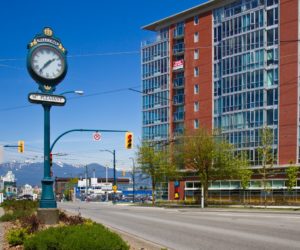Metro Vancouver Needs More Industrial Zoning

The beauty that draws people to Vancouver has also contributed to its growth woes. The city is surrounded on all sides by mountains and water which means land is scarce. Downtown is already the second-most densely populated area in North America after Manhattan. The increasing population is forced to live in higher density which is increasing the demand for condos and townhouses.
One thing people don’t realize but is vital to the overall health of a city is industrial land. It’s often not very pretty to look at or considered an asset to a city but it’s just as important as commercial or residential zoning.
In a recent report, the industrial vacancy rate dropped from 3.9 percent to 2.3 percent between 2016 and 2017, and they predict that by the end of 2018 it will fall to a historic 1.7 percent.
The report says rent is up 13.6 percent year-over-year in the Lower Mainland, at an average $10.23 per foot by the last quarter of 2017.
One of the more recent sales is an industrial zone in southeast Surrey near the U.S. border involved a 1.72-acre serviced lot that sold in November for $3.18 million, nearly twice its assessed value of $1.65 million.
About six million square feet of industrial space in the zone has been built out so far, with that number expected to grow to about 25 million square feet when the 1,800-acre zone reaches its potential. The creation of new logistics, warehouse and other light industrial space in the latest phase of the park, however, has done little to ease the overall shortage of industrial space in the region. Land values also continue to skyrocket on the resale market.
There is no land left in the Lower Mainland for industrial development which is driving up prices. Buyers from the U.S. and other parts of Canada don’t believe how much land goes for. In fact, the cost to buy and develop industrial land in places like Calgary, Edmonton, and Ottawa costs a third of what it costs in Metro Vancouver. It’s at a critical point where it is now affecting our economy.
The city needs to do a better job of ensuring we have a good mixture of residential, commercial and industrial land.
Alarmingly, much of that land intended for industrial activities is being converted to residential and commercial. It’s common to think of industrial land in terms of heavy machinery and factory chimneys. However, in the Lower Mainland industrial land is needed for the smooth and efficient movement of goods.
For example, when you purchase something from your local store, consider how it got there. It quite likely came from overseas — maybe China, Europe, or Japan — and it needed not only a ship to get here, but also a port terminal, a distribution centre, a truck or two, perhaps a train, and a warehouse at the very least. The closer those things can be together to each other, the more efficient goods movement can be.
Forcing distribution centres and warehouses to locate outside of Metro Vancouver means more traffic on our roads, increased emissions, higher prices for consumers, and challenges for companies seeking to import and export their goods. None of this is good for the overall health of the city and only adds to Vancouver’s reputation as an unaffordable city.


